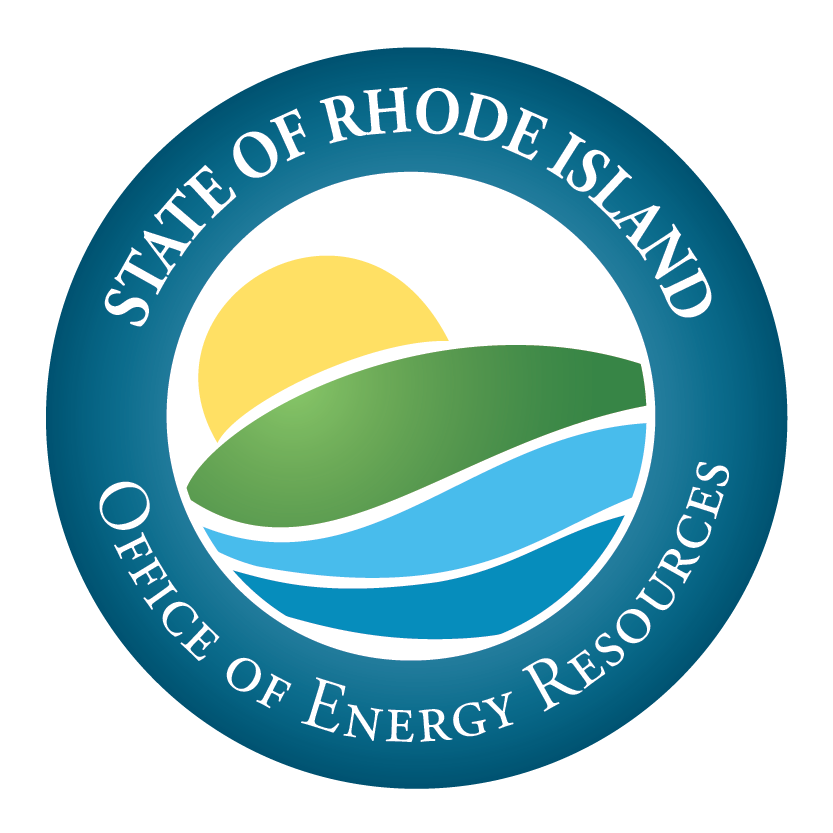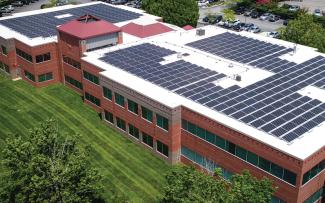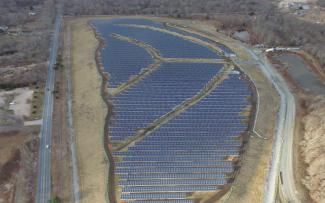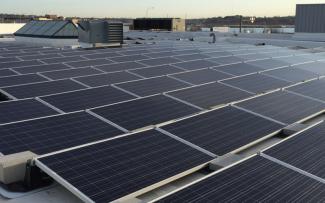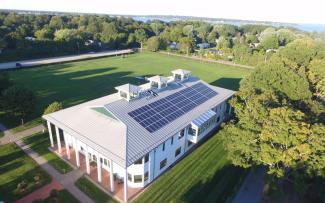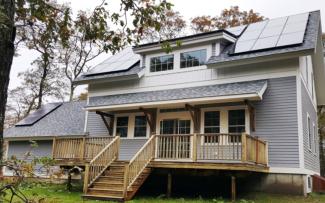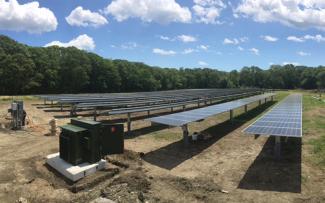RI’s Clean Energy Portfolio
As of the first quarter of 2025, the state has counted approximately 1366 MW of clean energy generation capacity. Of that 1366 MW total, 742 MW is solar, 430 MW is offshore wind, 148 MW is onshore wind, 35 MW is landfill gas/anaerobic digestion, and 11 MW is small-scale hydroelectric power.
With the addition of the 400 MW Revolution Wind project, approximately 85 percent of Rhode Island's current clean energy portfolio is comprised of in-state renewables or projects scheduled for adjacent federal waters. For more information and resources on climate change in Rhode Island visit https://climatechange.ri.gov.
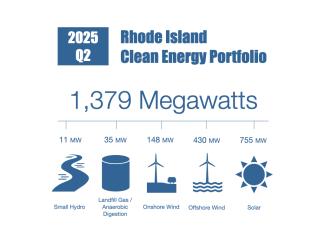
How we count projects in RI’s Clean Energy Portfolio
The projects that are counted in Rhode Island’s clean energy portfolio include a wide variety of sizes and locations, of the following technologies:
- Solar, whether rooftop, carport, or ground mount
- Small hydro
- Wind, both offshore and onshore
- Landfill gas/anaerobic digestion
Projects may be proposed, under development, or even under construction without being counted in the portfolio. A clean energy project is only counted when one of the following events has occurred:
- Project is interconnected to the electric grid. This set of projects includes projects that use one of the state renewable energy programs, including the Renewable Energy Growth Program, Net Metering, the Renewable Energy Fund.
- The project has a long-term contract or Power Purchase Agreement (PPA) approved by the RI Public Utilities Commission (PUC). Projects in this category are generally larger scale projects which have been selected under a competitive bid process, negotiated a PPA with the utility, and had the PPA reviewed and approved by the PUC.
Energy Storage Statistics
Energy Storage Statistics provides an interactive dashboard of the progress and development of energy storage systems throughout Rhode Island.
The dashboard below will be updated quarterly.
Last updated February 5, 2025
Please cite use of these date and images:
RI Office of Energy Resources, Energy Storage Dashboard
Data last updated February 5, 2025. Retrieved [insert date retrieved] from: https://energy.ri.gov/renewable-energy/energy-storage-0
Terms & Definitions:
Total Rated Continuous Power Output: Continuous power is the amount of power that a battery can supply to continuously power a device that’s already started. Total rated continuous power output is the maximum amount of power a device can continuously produce under normal conditions over a period of time. A battery’s power rating is important for determining which and how many appliances you can run at the same time.
DG Fuel Source: DG= Distributed Generation. The type of renewable energy resource interconnected to the battery, if any.
Net-Metered: A net-metered renewable energy system uses a bi-directional meter to “net-out” a customers monthly electricity use. At the end of the month, a customer pays the net of the electricity load that was both consumed and produced.
Qualifying Facility: Click here to visit the Federal Energy Regulatory Commission’s (FERC) website on qualifying facilities.
Bill Rates:
- A-16: Residential Energy Customer Rate
- A-60: Low-Income Bill-Rate
- C06: Commercial Bill Rate
- G32: Industrial Bill Rate
Clear River Electric & Water District (CREW): CREW was formed following the merger of the Pascoag Utility District and the Harrisville Fire District's Water Department. CREW is a quasi-municipal utility that provides electricity and water services on a not-for-profit basis. Regulated by the Rhode Island Public Utilities Commission, CREW currently services approximately 7,000 electric and/or water customers across Pascoag, Harrisville, and Oakland-Mapleville. For more information about CREW please visit: https://crewri.org/.
This dashboard has been updated to include the Pascoag Battery Storage Project, which was installed in 2022. To learn more about the Pascoag Battery Storage Project, check out this video.
Please note that this dashboard is not owned or operated by CREW or Rhode Island Energy, but is intended to provide valuable insights about energy storage data made available to OER.
Contact Us
If you have any additional questions about RI’s Clean Energy Portfolio, please contact Katherine Ortiz at katherine.ortiz.ctr@energy.ri.gov
